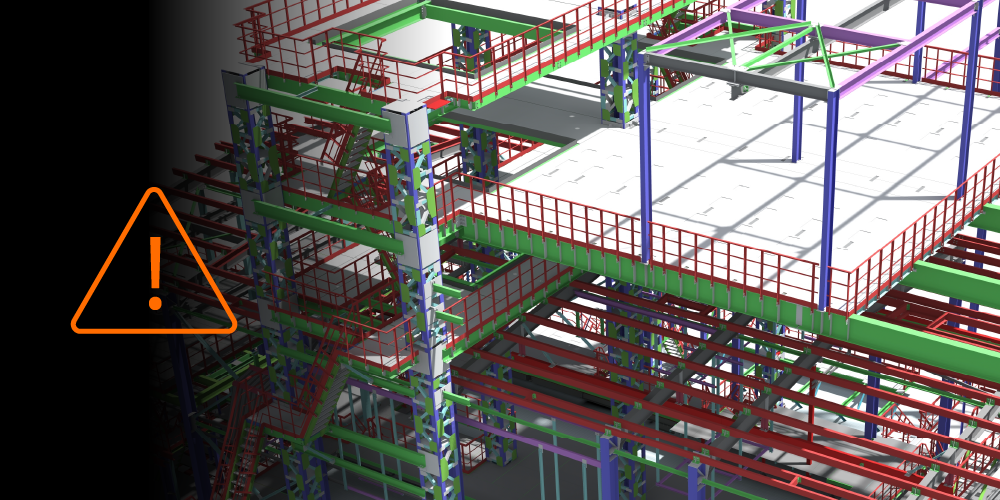Related Articles
— 8 min read
Defects Liability Period in Construction: A Guide for Australian Contractors

Last Updated Sep 30, 2025

Josh Krissansen
47 articles
Josh Krissansen is a freelance writer with two years of experience contributing to Procore's educational library. He specialises in transforming complex construction concepts into clear, actionable insights for professionals in the industry.
Last Updated Sep 30, 2025

The end of a build isn’t always the end of the risk. In Australia, the defects liability period (DLP) is where reputations are cemented — or disputes begin. Clients expect flawless handover, while contractors juggle retention money, defect rectification, and thin margins.
An NSW case, Parkview Constructions Pty Ltd v Futuroscop Enterprises Pty Ltd, showed how mismanaging the DLP can strip contractors of their rights to damages for obvious defects if notice procedures aren’t followed.
Handled well, the DLP protects margins, accelerates retention release, and strengthens client trust. Managed poorly, it leaves contractors exposed. This guide explores how the DLP works in Australia, and how to turn it into an advantage rather than a liability.
Table of contents
What is the Defects Liability Period?
The defects liability period (DLP) is a contractual clause that begins once a project reaches practical completion. It is not a statutory requirement but a standard feature of most Australian construction contracts.
This period typically runs for 6 to 24 months, with 12 months being the most common.
During this time, contractors are responsible for returning to the site and rectifying any defects or incomplete works identified by the owner and formally reported to the head contractor.
The DLP provides quality assurance after handover, protecting the client’s investment while giving contractors a defined process to resolve issues. It sits alongside other obligations such as manufacturer warranties, which may extend beyond the DLP.
Why the Defects Liability Period is Important
The defects liability period is a critical safeguard for both clients and contractors. It ensures construction quality after handover, protects financial interests, and creates a structured closeout process that benefits all parties.
Safeguards the Client’s Investment
For clients, the DLP assures that any defects will be corrected at no additional cost.
It confirms that the finished building meets performance and compliance requirements while protecting the owner against financial loss before retention funds and final payments are released.
Protects the Contractor’s Position
For contractors, the DLP is equally valuable.
It creates a clear contractual right to return and remedy defects, reducing the likelihood of disputes and avoiding the expense of third-party interventions. By addressing issues promptly, contractors protect their reputations and maintain stronger long-term relationships with clients.
Ensures a Controlled Project Closeout
The DLP also structures the closeout stage. By linking defect rectification to retention release and final payment, it establishes accountability and ensures that work is properly completed.
This process reduces callbacks, creates a smoother handover, and provides greater certainty for both owners and contractors.
How the Defects Liability Period Works
The defects liability period (DLP) establishes clear obligations and processes for resolving issues after practical completion. Understanding its commencement, scope of responsibility, and financial implications helps contractors manage risk and close projects effectively.
Commencement and Duration
The DLP begins at practical completion when the project is formally handed over.
It typically runs for 6 to 24 months, with 12 months being the most common. Some manufacturer warranties operate independently of the DLP and may extend beyond this period.
Contractor’s Responsibility
During the DLP, contractors must repair defects in workmanship and materials. They are not responsible for normal wear and tear, misuse, or damage caused by occupants.
If serial defects occur, a new DLP is often applied to the rectified works, extending liability until those issues are resolved.
Defect Management Process
The process for addressing defects usually follows a structured path:
- The owner issues a notice of defect to the head contractor
- The contractor investigates and, where required, engages subcontractors
- A defect list tracks all the necessary corrections until closeout
- Verified repairs are signed off before retention funds and final payments are released
Covered vs Non-Covered Defects
Not every issue that arises after handover falls within the DLP. Contracts distinguish between defects that the contractor must rectify and issues that remain the owner’s responsibility.
- Covered: cracks in finishes, water leaks, faulty equipment
- Not covered: occupant damage, poor maintenance, normal deterioration
Clear boundaries prevent disputes and help contractors manage client expectations effectively.
Financial and Contractual Consequences
Retention and final payments are withheld until all identified defects are rectified. October 2023 reforms introduced protections for subcontractors’ retention in cases of insolvency, adding a compliance requirement for head contractors.
Failure to address defects can escalate into contractual disputes or trigger formal legal remedies.
Special Cases: Latent Defects
Latent defects are hidden issues that may not become apparent until years after handover.
Once the DLP has expired, these claims are usually pursued under statutory warranties or through separate legal action. Resolving them often depends on forensic review of project records, making thorough documentation during the DLP essential for limiting exposure.
Defects Liability Period vs Statutory Warranties
The defects liability period (DLP) and statutory warranties protect handover but serve different purposes.
The DLP is a short-term contractual remedy, while statutory warranties are long-term legal protections that extend well beyond project completion.
Defects Liability Period (Contractual)
The DLP begins at practical completion and usually runs for 6 to 24 months, with 12 months being the most common. It requires contractors to rectify defects in workmanship and materials identified during this period.
Compliance is reinforced by tying rectification to retention funds and final payments, giving clients leverage to ensure defects are resolved before closeout.
Statutory Warranties (Legislative)
Statutory warranties are mandated by Australian Consumer Law (ACL) and apply regardless of what is written in the contract. They extend for six years for structural defects and two years for non-structural defects, requiring contractors to maintain compliance with safety, quality, and performance standards.
Unlike the DLP, enforcement occurs through regulators or the courts, making it a more powerful and long-term protection for owners.
What Happens at the End of the Defects Liability Period
The close of the defects liability period marks the final stage of a project. It formally confirms that all contractual obligations have been met and that the client has received a completed, compliant asset.
The process typically involves:
- A final inspection to confirm all outstanding defects have been rectified
- Closure and sign-off of the defect list
- Issuance of a Certificate of Final Completion or equivalent document
- Release of retention or security once all requirements are satisfied
- Handover of all documentation to the client, including as-builts, warranties, and operation and maintenance manuals
Although the DLP ends with these steps, liability does not disappear entirely. Contractors remain responsible for latent defects, which are usually addressed under statutory warranties or through separate legal action. Maintaining accurate records during the DLP helps limit future exposure.
Contractor Strategies for a Smooth Defects Liability Period
Managing the defects liability period effectively protects cash flow, strengthens client relationships, and reduces the risk of disputes.
Contractors that treat the DLP as a structured business process achieve smoother closeouts and stronger long-term outcomes.
Implement Rigorous Documentation Systems
Accurate records form the foundation of effective defect management. A live defects log, updated in real time and accessible to all stakeholders, ensures issues are tracked and resolved.
Keep complete records of as-built drawings, O&M manuals, commissioning reports, and warranties. Digital tools that timestamp submissions and approvals create defensible evidence in the event of disputes.
Company-wide document standards reduce handover risks across multiple projects and provide consistency in record-keeping.
Strengthen Quality Control and Risk Management
Quality inspections should continue throughout the DLP, not only at final closeout. A quality risk register that links tasks to standards and potential failure points allows teams to spot issues early.
Construction technology can log, prioritise, and close deficiencies quickly. Treating quality reporting with the same rigour as safety reporting embeds accountability across the team.
Maintain Proactive Client Communication
Clear, consistent communication prevents disputes and builds trust. During the DLP, hold structured meetings with clients and consultants, supported by transparent status reports on open defect items.
Create direct channels with occupants where relevant to manage expectations. Framing defect resolution as a value-adding service strengthens relationships and helps position contractors as long-term partners.
Plan for Smooth Project Closeout
Closeout should be planned well before the end of the DLP. To avoid last-minute gaps, align deliverables early, including warranties, manuals, drawings, and certification.
Proactive inspections before client walkthroughs reduce the number of issues raised late in the process. Allocating resources to defect rectification in advance prevents delays in final sign-off.
A seamless closeout is more than compliance. It demonstrates professionalism and strengthens the chance of repeat business.
Protect Financial Outcomes
Retention management is a financial priority. Contractors should closely monitor arrangements, particularly in light of the October 2023 reforms protecting subcontractors’ retention in insolvency cases.
Link defect rectification timelines to retention release within cash flow forecasts. Quick resolution of defect items frees up working capital and avoids payment delays.
DLP financial data also provides valuable insights for improving estimates and risk allocation in future tenders.
Leverage Technology for Efficiency
Digital inspection tools capture, assign, and track defect items in real time.
When integrated with scheduling and financial systems, they give project teams complete performance visibility.
Dashboards showing defect trends across projects provide executives with actionable insights. These tools improve resource planning and support strategic decision-making at the portfolio level.
The defects liability period strengthens project outcomes and future opportunities.
The DLP safeguards cash flow, reduces risk, and maintains client confidence when treated as a structured process. For contractors, it represents not just the end of a job but a disciplined closeout that builds leverage for future work.
Categories:
Written by

Josh Krissansen
47 articles
Josh Krissansen is a freelance writer with two years of experience contributing to Procore's educational library. He specialises in transforming complex construction concepts into clear, actionable insights for professionals in the industry.
View profileExplore more helpful resources

Managing Direct Costs in Construction: How Visibility Drives Profitability
Direct costs define the financial reality of every construction project. They cover the labour, materials, and equipment that drive delivery and determine profitability. But even the best-planned budgets can shift...

BIM Clash Detection: Reducing Rework, Delays, and Risk in Construction
Design clashes can be a significant hidden cost in construction, as each conflict between systems risks expensive rework, project delays, and reduced margins. BIM clash detection empowers teams to identify...

Next-Gen Job-Costing: Ready to Move? 5 Things to Consider Before You Get Started
In this three-part series, Quantity Surveyor turned Financial Solutions Specialist Clint Burgess uncovers the real-world gains for people, processes, and profits when businesses move from legacy to next-generation Enterprise Resource...

From Workarounds to Workflow: Solving Construction’s Legacy Job-Costing System Challenges with Next-Gen Tools
In this three-part series, Quantity Surveyor turned Financial Solutions Specialist Clint Burgess uncovers the real-world gains for people, processes, and profits when businesses move from legacy to next-generation Enterprise Resource...
